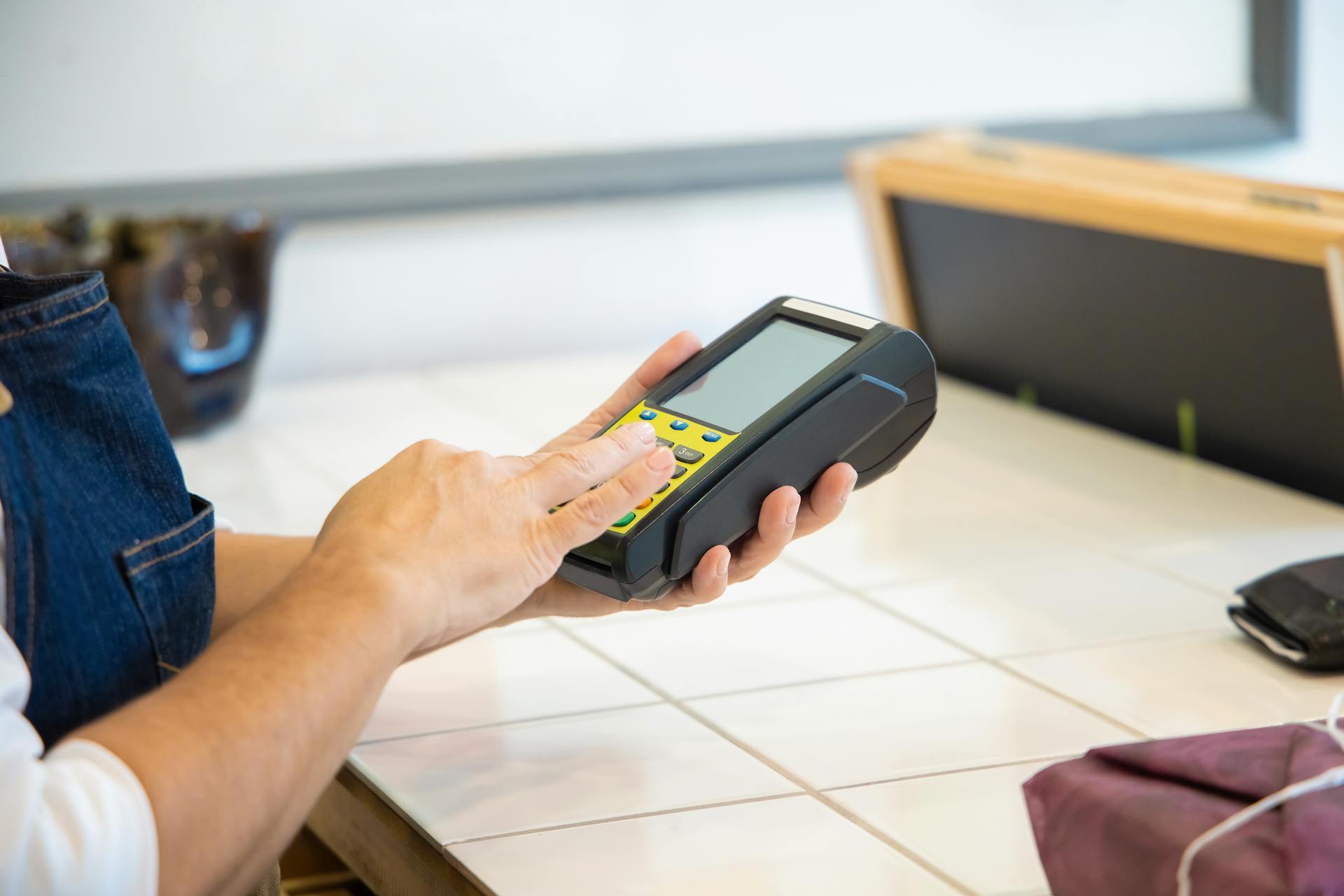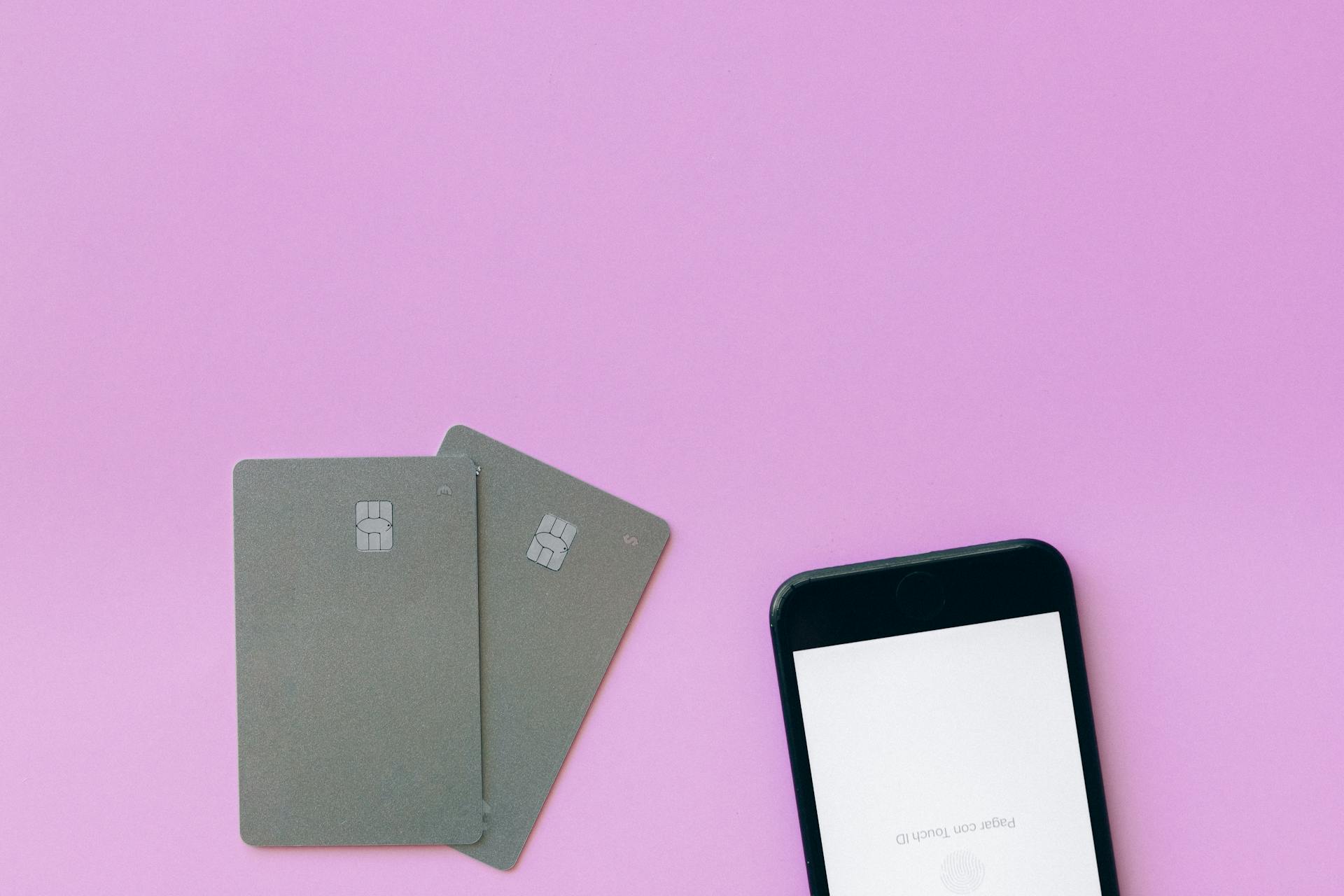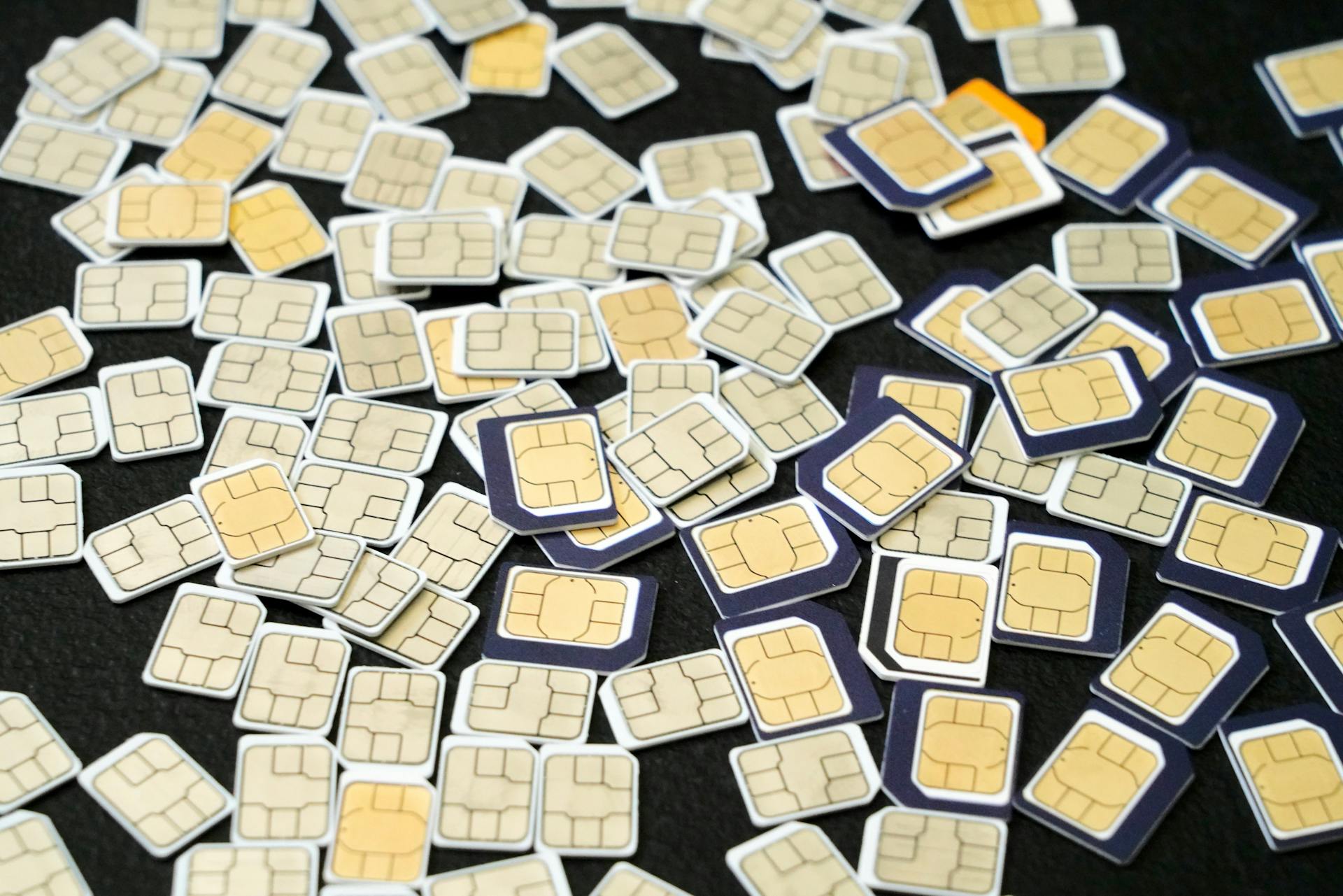
A SIM card stores data, but it's not like a hard drive. It stores a unique ID and authentication keys.
This ID and authentication keys are what identify your phone to the network and allow you to make calls, send texts, and access data.
The SIM card stores this information in a small amount of memory, typically around 64 kilobytes.
This memory is used to store the phone's IMSI (International Mobile Subscriber Identity), the phone number, and other essential information.
On a similar theme: What Stores Offer Credit Cards
What's Stored on a SIM Card
A SIM card is more than just a tiny chip in your phone. It stores a surprising amount of information that helps you stay connected to your mobile network. This includes your phone number, contact names, and text messages.
The exact SIM storage capacity can vary depending on your smartphone and telecom operator, but it's generally around 32 KB to 128 KB. This might not sound like a lot, but it's enough to store some essential data.
Expand your knowledge: Cell Phone Expenses

Here are some of the key types of data that are stored on a SIM card:
- Contacts: Your SIM card can keep a list of your contacts, including phone numbers and names.
- Text messages: SIM cards have a small space to store SMS messages, limited to a certain number of characters.
- Call logs: Your SIM card stores information about your recent calls, including the date, time, and duration of the call.
- Network information: This includes the carrier name and network settings.
- Security features: Your SIM card comes with security features like a PIN code and a PUK (Personal Unblocking Key) code to protect your data.
These types of data are designed to be stored on a SIM card for a reason. It allows for portability, convenience, and security. With a SIM card, you can easily switch phones and still have your contacts and messages. You can also quickly access essential information without using your phone's memory, which is especially helpful if you're low on storage space.
Check this out: Reset Sim Card
Information Stored by SIM Cards
A SIM card stores a lot of information that helps identify you to the network and allows you to access various services. This includes your phone number, subscriber identifier number, and authentication key.
SIM cards can also store contact information and text messages, although it's up to you to decide whether you want to store these on your SIM card or in the cloud. Traditionally, people stored contact information and text messages in their SIM cards so they could easily take them with them when switching phones.
Additional reading: How to Get My Debit Card Number without My Card

Here are some types of data that SIM cards are designed to hold:
- Contacts: Your SIM card can keep a list of your contacts, including phone numbers and names.
- Text messages: SIM cards have a small space to store SMS messages, limited to a certain number of characters.
- Call logs: Your SIM card also stores information about your recent calls, including date, time, and duration.
- Network information: This includes the carrier name and network settings.
- Security features: SIM cards come with security features like a PIN code and PUK code to protect your data.
These are just some of the types of data that SIM cards can store, and there are many more benefits to having a SIM card that stores data, such as portability, convenience, and security.
Check this out: Does a Sim Card Store Data
SIM Card Data Types
A SIM card can store a list of your contacts, including phone numbers and names. This is a common misconception that SIM cards are only for storing network information.
Your SIM card has a small space to store SMS messages, but these messages are limited to a certain number of characters, so they can't store long conversations.
A SIM card also stores information about your recent calls, including the date, time, and duration of the call. I've noticed that this information can be useful for tracking your call history, especially if you're trying to recall a conversation.
Network information, such as the carrier name and network settings, is also stored on your SIM card. This is because the primary purpose of a SIM card is to connect your phone to a cellular network.
For more insights, see: Qlink Sim Card
Your SIM card comes with security features to protect your data, including a PIN code that you need to enter every time you turn on your phone and a PUK (Personal Unblocking Key) code that you may use if you forget your PIN.
Here are the specific types of data that SIM cards are designed to hold:
Information in Cards?
A SIM card is more than just a tiny chip that helps you make phone calls and access the internet. It can store a surprising amount of information, including phone numbers, contact names, text messages, and more.
The exact storage capacity of a SIM card can vary depending on your smartphone and telecom operator, but it's not like the storage on your phone or a USB drive. SIM cards are designed to hold specific types of data, such as contacts, text messages, and call logs.
Here are some examples of data that SIM cards can store:
- Contacts: Your SIM card can keep a list of your contacts, including phone numbers and names.
- Text messages: SIM cards have a small space to store SMS messages, limited to a certain number of characters.
- Call logs: Your SIM card stores information about your recent calls, including the date, time, and duration of the call.
But what about photos and videos? Unfortunately, SIM cards can't store pictures or video clips. They also can't store apps, games, or operating systems. And, no, they don't store your internet browsing history either.
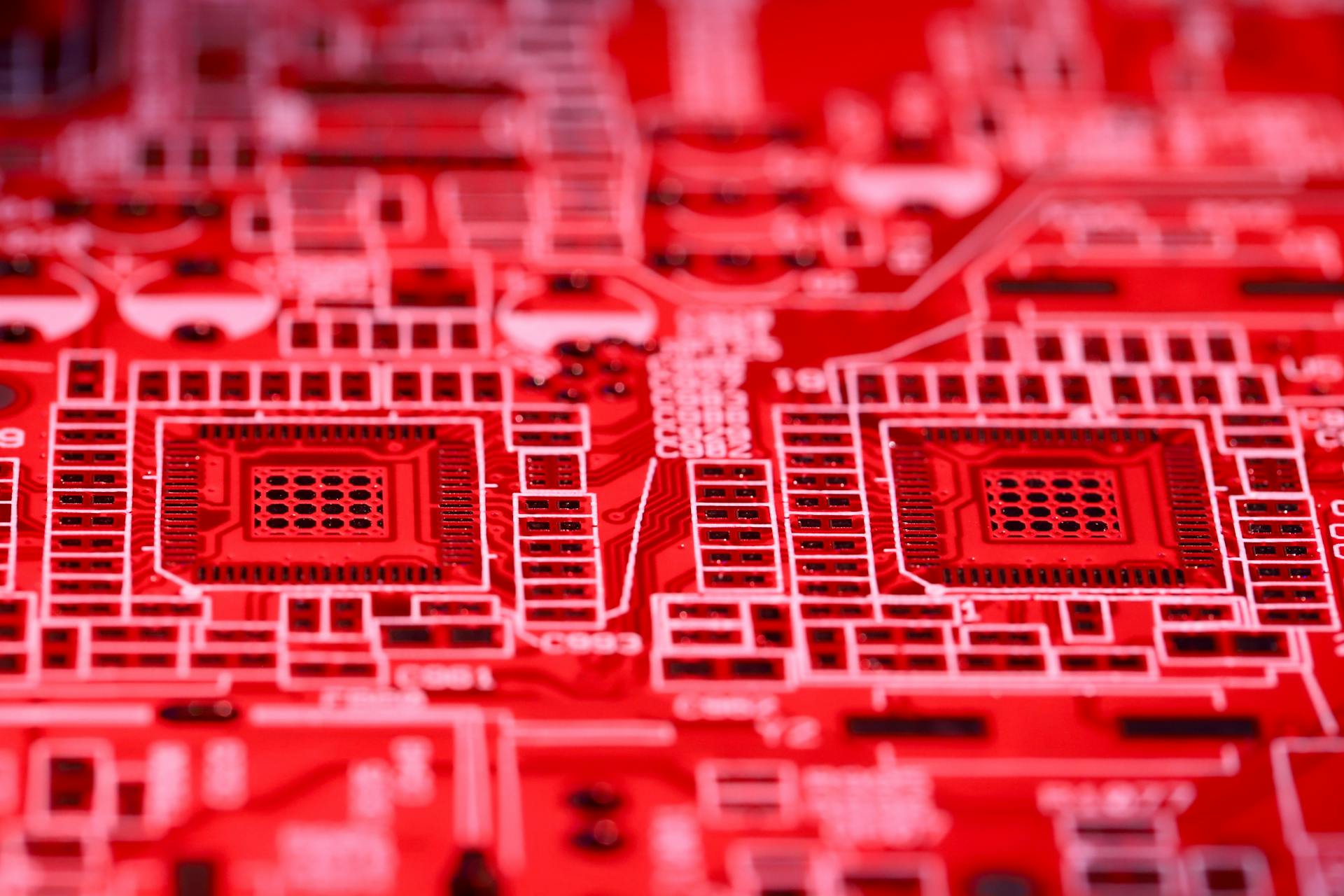
It's worth noting that some people used to store contact information and text messages on their SIM cards, but with the advancement of cloud technology, many people now choose to backup and sync their messages and contacts to the cloud instead. This way, you can access your information from multiple devices seamlessly.
So, there you have it – a SIM card is more than just a tiny chip that helps you make phone calls and access the internet. It's a storage device that holds specific types of data, and it's worth understanding what it can and can't do.
Intriguing read: Is an Amazon Store Card Worth It
Data Storage and Removal
A SIM card stores data, but it's not like the storage on your phone or a USB drive. It's a unique storage system that has its own advantages and limitations.
One of the benefits of storing data on a SIM card is portability - it's easy to switch phones and still have your contacts and messages by moving the SIM card. This is especially helpful if you're low on storage space on your phone.

A SIM card can store contact information, telephone numbers, SMS messages, billing information, and data usage. It also has its own personal identification number (PIN) to protect against theft.
Some information on a SIM card is easy to access, such as your contacts and call logs, without using your phone's memory. This can be a convenient feature, especially if you're running low on storage space.
A SIM card stores data securely, and having some information on your SIM card instead of your phone can be safer if your phone is lost or stolen. Your contacts and call logs can't be accessed if the SIM card is removed.
Here are some types of information a SIM card stores:
- Contact information
- Telephone numbers
- SMS messages
- Billing information
- Data usage
How Much Data on a SIM Card?
A SIM card can store a surprising amount of data, but what exactly does it hold? It's a chip within your smartphone that helps you make phone calls, access the internet, and more.
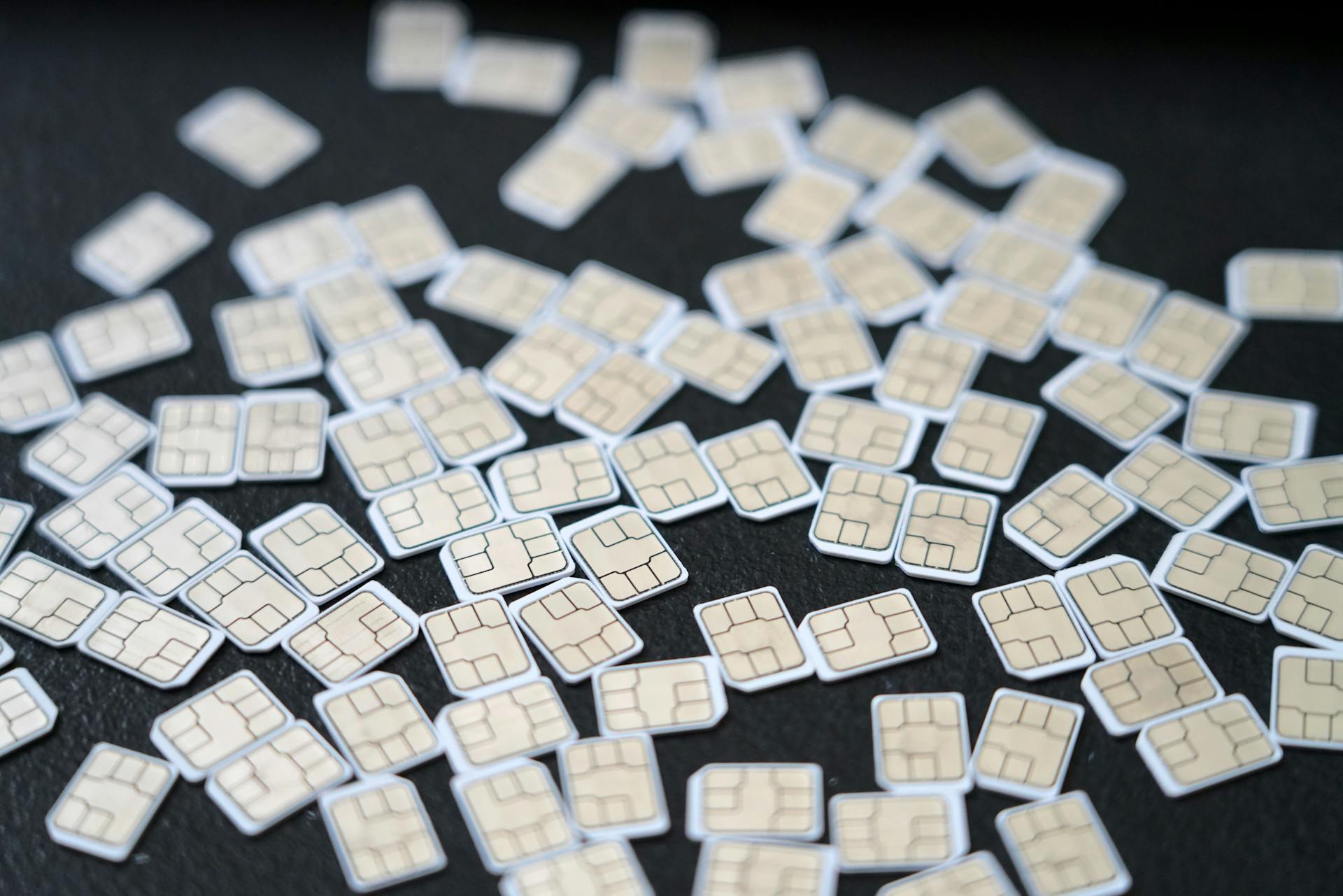
A regular SIM card can store information like phone numbers, contact names, and text messages. The exact storage capacity can depend on your smartphone, telecom operator, and other factors.
Some of the data that can be stored on a SIM card includes phone numbers, contact names, text messages, and even phone call records. This information is stored in various formats, such as the Mobile Station Integrated Services Digital Network (MSISDN) and the Short Message Service Centre (SMSC).
A SIM card can also store your phone's International Mobile Subscriber Identity (IMSI) number, which identifies your SIM within the services of your telecom provider. This is a unique 15-digit number that's used to authenticate your SIM card.
Here's a breakdown of some of the key data stored on a SIM card:
Removing your SIM card won't delete everything, but it will remove data that's stored on the SIM itself, like contacts or texts.
Does a Card Store Data?

A SIM card does store data, but it's not like the storage on your phone or a USB drive. It stores information such as phone numbers, contact names, text messages, and more.
The storage capacity of a SIM card can vary depending on the smartphone and telecom operator. Some SIM cards can store up to 128 KB of data.
You can store contact information, telephone numbers, SMS messages, billing information, and data usage on a SIM card. It also has a personal identification number (PIN) to protect against theft.
A SIM card stores user identity, location, and phone number, as well as network authorization data, personal security keys, contact lists, and stored text messages.
Here are the types of data that can be stored on a SIM card:
- Phone numbers
- Contact names
- Text messages
- Phone logs
- Contact lists
Removing your SIM card won't delete everything on your phone. It will only remove data that's stored on the SIM itself, such as contacts or texts saved on the SIM.
What a SIM Card Is Not

A SIM card is not a storage device for personal files or media. It's not designed to hold onto your favorite photos or videos.
You can't save apps or games on a SIM card, so if you're looking to download new software, you'll need to look elsewhere.
The operating system that makes your phone run isn't stored on the SIM card, so don't worry about your phone's core functionality being compromised.
Important personal documents like documents, PDFs, or presentations are also not stored on a SIM card. You can't rely on it to keep your sensitive files safe.
Here are some types of data that a SIM card is not capable of storing:
- Photos and videos
- Apps and games
- Operating system
- Important personal documents (like documents, PDFs, or presentations)
Understanding SIM Cards
SIM cards are small, yet mighty, and they store a surprising amount of information. A SIM card stores your contacts, including phone numbers and names.
You might be wondering why your SIM card can hold so much data. It's because SIM cards are designed to store network-specific information, such as the carrier name and network settings. This allows your phone to connect to the right network and access the internet, make calls, and send texts.

But what about security? SIM cards have a PIN code that you need to enter every time you turn on your phone, and a PUK (Personal Unblocking Key) code that you may use if you forget your PIN.
One of the best things about SIM cards is their portability. If you switch phones, you can simply move your SIM card to the new device and all your contacts and messages will be there. This is especially convenient if you're low on storage space on your phone.
Here's a breakdown of the types of data that SIM cards are designed to store:
- Contacts: phone numbers and names
- Text messages: limited to a certain number of characters
- Call logs: date, time, and duration of calls
- Network information: carrier name and network settings
- Security features: PIN code and PUK code
SIM cards also store network authorization data, personal security keys, contact lists, and stored text messages. This information allows your phone to use the features that come with your SIM card, such as making calls and connecting to the internet.
Advantages and Miscellaneous
Having a SIM card that stores data has its perks. You can easily switch phones and still have your contacts and messages by moving the SIM card.

One of the main advantages of storing data on a SIM card is portability. It's easy to switch phones and still have your contacts and messages by moving the SIM card.
Quick access to essential information is also a plus. You can quickly access your contacts and call logs without using your phone's memory, which is especially helpful if you're low on storage space.
Having some information on your SIM card instead of your phone can be safer if your phone is lost or stolen. Your contacts and call logs can't be accessed if the SIM card is removed.
Here are some of the key benefits of storing data on a SIM card:
- Portability: Switch phones and still have your contacts and messages by moving the SIM card.
- Convenience: Quickly access essential information without using your phone's memory.
- Security: Having some information on your SIM card instead of your phone can be safer if your phone is lost or stolen.
Sources
- https://www.airtel.in/blog/prepaid/what-is-stored-on-a-sim-card-and-how-it-works/
- https://www.three.co.uk/blog/sim-card-answers
- https://www.getnomad.app/blog/what-information-is-stored-in-sim-cards
- https://truely.com/blog/does-sim-card-store-data
- https://www.techtarget.com/searchmobilecomputing/definition/SIM-card
Featured Images: pexels.com
